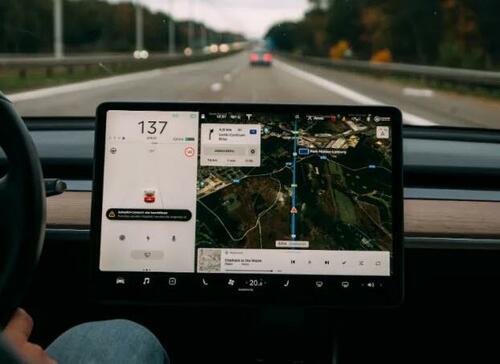Without Subsidies, How Many People Will Buy An EV?
Authored by Mike Shedlock via MishTalk.com,
Sales in Germany plunge after subsidies were reduced...
Think Twice About Electric Vehicles
The Wall Street Journal reports Germans Think Twice About Electric Vehicles
Sales of fully electric vehicles (EVs) fell 13.2% in January compared to January 2022, Germany’s Motor Transport Authority reports. Sales of hybrids declined 6.2%. This compares to an increase of 3.5% in the number of new gasoline-powered cars sold, and a modest decline of 1.2% for diesel.
The main explanation is the end of Berlin’s subsidies for EVs and hybrids at the new year. Until December the subsidy had offered up to €9,000 split between consumer and producer for EVs with a net list price below €40,000. Hybrids in that price range received €6,750. Berlin has ditched the subsidy for hybrids entirely, and cut the payout to €4,500 for EVs below €40,000.
This year will thus be a market test for electric vehicle demand in the Vatican of climate-change belief. Politicians in the West have used subsidies and mandates to drive EV sales, no matter that they aren’t as green as their advertising. The cars are only as carbon-friendly to operate as the power grids they refuel from, and Berlin’s refusal to embrace nuclear power means Germany is burning more coal to cover for the end of natural-gas imports from Russia. Then there’s the environmental cost of mining for all that cobalt, copper and lithium for EVs and their batteries.
If consumers want to buy EVs, go for it. But what does it say about their appeal if people need subsidies to buy them?
Can the Power Grid Handle a Wave of New Electric Vehicles?
Also consider the question Can the Power Grid Handle a Wave of New Electric Vehicles?
Experts believe EVs will make up a third or even half of all light vehicles sold annually in the U.S. by 2030, up from about 7% in 2022.
If those predictions are correct, that leaves a big question: Will the power grid be capable of charging the batteries in those tens of millions of vehicles?
Some grid operators already are struggling to keep up with demand in certain areas and at certain times—California power authorities, for example, asked residents to avoid charging electric cars in the evening during a heat wave last September to help avoid overloading the grid, while utility officials in other areas have warned at times of possible rolling blackouts to prevent system collapses.
First, the good news: Many experts think the utility industry will be ready to generate enough power for the coming EV wave, thanks to planned capacity increases costing hundreds of billions of dollars.
But that isn’t the whole story. The potential for much more serious bottlenecks looms in the local legs of the grid that transmit electricity to individual homes and businesses. Expensive upgrades could be needed for these neighborhood power-distribution systems. Additional spending will be needed to bolster the wires and transformers serving commercial sites as electric trucks and delivery vans become common.
Combined, all these investments likely would result in higher electric rates, many industry analysts say. “The more they invest in the grid, the more those costs go back to consumers,” says Brad Stansberry, U.S. energy advisory leader at audit and consulting firm KPMG.
Let that last sentence paragraph in. Utilities will have to spend a lot of money to add capacity. It will cost even more if the capacity is a clean energy input source.
Cleaner energy will eventually come from solar, but how do we get that energy to Chicago? At what price?
I still wonder how the heck an evacuation of Florida happens when everyone needs to drive hundreds of miles to escape a hurricane.
Are you convinced we have enough lithium, nickel, and other materials to make enough batteries? I am not. The more EVs we do build, the more metals we need. At what cost, and at how much pollution mining them?
Distance and Convenience
For me, it's all about distance and convenience.
It's convenient to charge at home, provided you don't go anywhere. I dive long distances and to the middle of nowhere frequently.
It is not so convenient to have to stop whatever you are doing to charge a vehicle (assuming you can find a charger in the middle of nowhere) or to rent a car if you want to drive five hours straight.
EV Sales Spiked in California
For a different take, Wolf Street reports EV Sales Spiked in California. First Uptick in Electricity Sales after 13 Years of Decline
But what about subsidies and the extraordinarily high price of gasoline in California?
* * *
https://www.zerohedge.com/personal-finance/without-subsidies-how-many-people-will-buy-ev
from ZeroHedge News https://ift.tt/T6bfkDw
via IFTTT





0 comments
Post a Comment